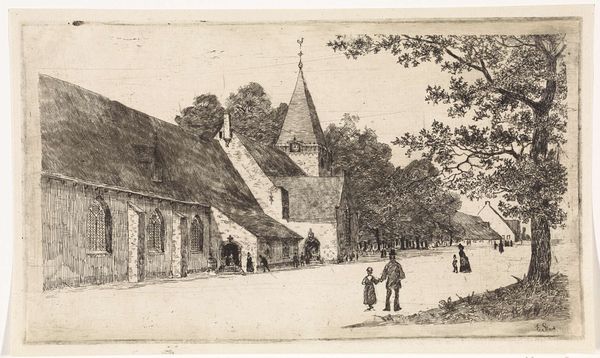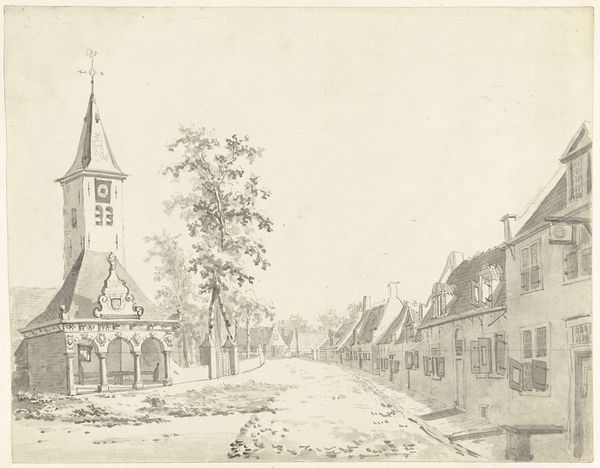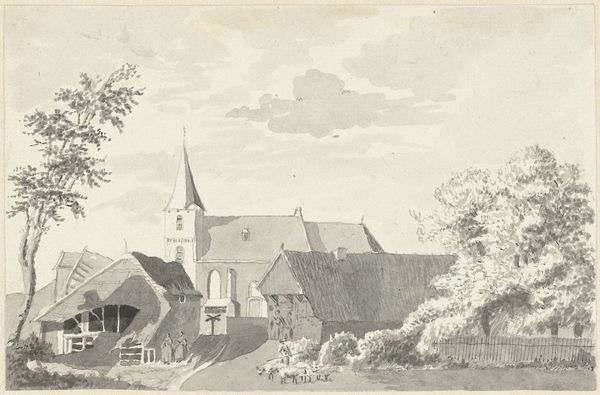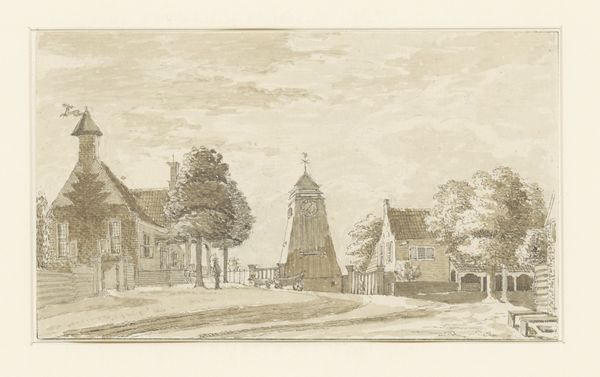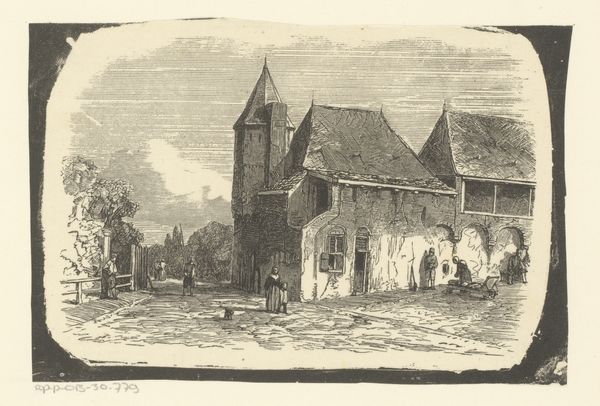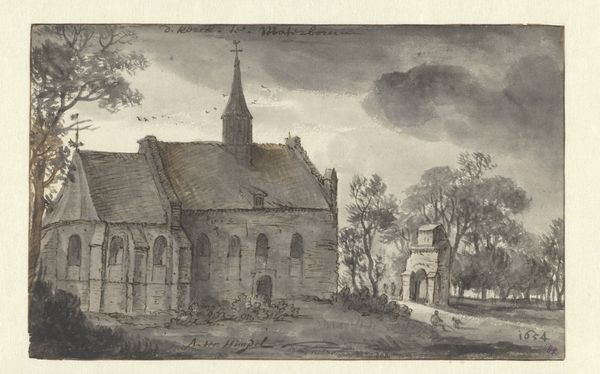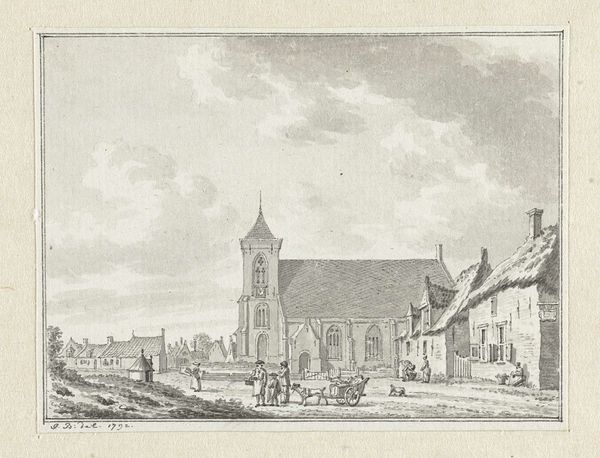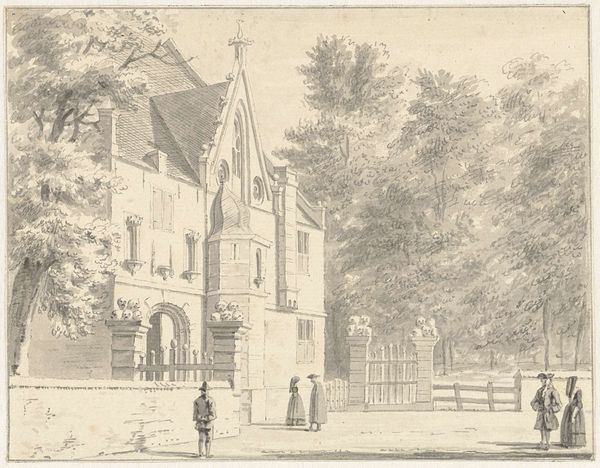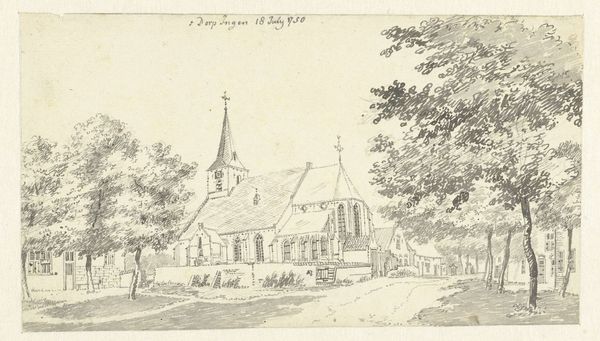
drawing, print, pencil
#
drawing
#
neoclassicism
# print
#
landscape
#
pencil
#
cityscape
Dimensions: sheet: 7 x 9 9/16 in. (17.8 x 24.3 cm)
Copyright: Public Domain
Editor: This is Reinier Vinkeles's "View of the Church of Passy, near Paris," created around 1770, employing pencil and printmaking techniques. I’m immediately struck by how the receding lines of the buildings create a very structured and almost theatrical depth. How does the composition inform our understanding of this cityscape? Curator: The piece achieves its effect primarily through its command of linear perspective. Note how Vinkeles has structured the receding planes. The buildings, delineated by crisp lines, are positioned within a hierarchy of spatial depth that guides our sight to the architectural subject with an ordered gaze, as intended. Editor: So, the sharp lines of the architecture create this order? Curator: Precisely. Semiotically, the architectural precision suggests stability and perhaps an aspiration towards enlightenment ideals through clarity of form. Are you noting anything specific about the texture within the strokes? Editor: I see a very subtle hatching used throughout, which, in the areas depicting the street and the rooftops, really contributes a sense of depth and mass, as well as to the mood overall, lending it a rather stoic atmosphere. Curator: Good observation. What do you think Vinkeles is implying through this interplay of line and mass, shadow and form? How does the regularity of structure contrast with the somewhat muted tonality, which softens the picture with a slightly nostalgic tint? Editor: Perhaps he is attempting to bridge the new architectural clarity with the ephemeral, human scale? Almost reconciling structure and feeling. Curator: An astute observation. Such dialogue between rational order and nuanced expression forms the very essence of the neoclassical. I think it does demonstrate the structures but makes room for a gentler, emotive touch that engages and speaks directly to the observer.
Comments
No comments
Be the first to comment and join the conversation on the ultimate creative platform.
